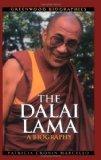When you think about kids in college or upper high school grades and you’re my age, you’re thinking… babies. Considering the difference in our ages, it’s probably understandable, but when you’re writing for teens, you’d better get that thought right out of your head. The very last thing they want to be are “kids.” They’re adults or young adults (not young adult readers, however), but not kids. And if you try to speak down to them that way, they’ll hate your writing.
Basically, teen readers (from about 15 to 21) don’t read much fiction that’s geared specifically toward them. They have the reading abilities of adults, and though the maturity may not be evident, some of them are truly wise beyond their years. No matter what stage of development, however, most of them are reading materials specifically for adults.
So, what to do. First, my advice would be not to have your heart set on this group entirely, unless you want to write nonfiction. That’s another ballgame because kids in these grades (11th through college) still read for classes. As I’ve mentioned my last four books were for this age group. If you pick one up, you’ll see that the language is fairly elevated and formal. You’ll use no contractions and the vocabulary needs to be more difficult.
But… and this is a very important element… You MUST manage to keep it interesting.
When writing my books, I had so many cool little “factoids” to use that it was exciting for me. Digging up these interesting and little known facts is a blast! I learned a lot, too, and wanted to use everything I found. Yet, I kept the very best things only for these books, and sprinkled them throughout the narrative.
These are kind of “WTF? moments,” in modern teen-speak, and this age group loves them.
For example, it’s probably well-known in the Tibetan provinces of China that the old ways to make yak butter tea (the traditional beverage there) is to add a small bit of yak dung to the mixture so that the loose tea leaves stuck to it and didn’t end up in the cup was pretty interesting. I mean, Tibetans are a hardy, healthy race, and this is just part of the recipe. But to modern teenage kids in the U.S., this ingredient doesn’t make the tea very appealing. Yet, nomad Tibetans may drink 40 cups a day.
Finding these cool little factoids and writing about them is part of the fun, and really necessary if you want to be sure that your books will be read. I don’t know… For me, I enjoyed the research more than the writing. 🙂
So, what are kids this age interested in?
- Politics — because they’re new to voting or are just about to vote
- Health — because they’re newly responsible for their own well-being
- Careers — because they need to decide on one or decide if they want to keep the one they have.
But relationships — love, marriage, sex; independence — no longer having that peer support group of high school or college friends; and travel — because they are now free and on their own, are some topics that kids might enjoy, as well.
Just think back to when you were that age (if you’re indeed older). Though you must realize that a lot has changed over the years, many of the same emotional battles that you had are ongoing. Just read some teen lit, listen to teen readers, and figure out where they are at this time in history and you should be good to go.

